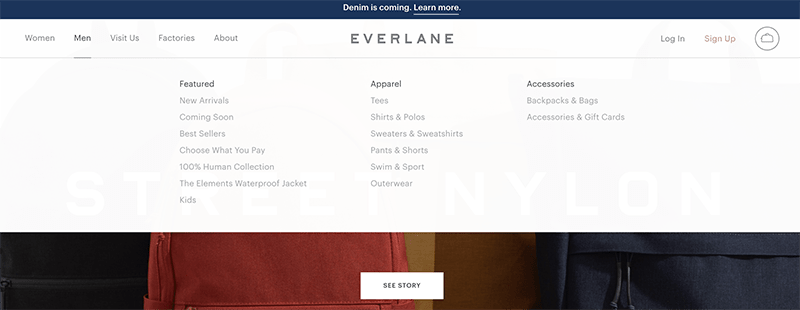Launching a startup is exhilarating, but it’s also when small mistakes get very expensive. Many founders rush to scale before they’ve locked in a product that truly meets user needs. That rush is one of the most common reasons growth stalls.
Partnering with a digital product design firm early is a strategic decision that reduces risk, saves engineering effort, and makes future scaling far more predictable.
The Real Cost of Scaling Too Soon
Growth doesn’t fix gaps; it exposes them. If the product is clear, useful, and delightful, scale multiplies retention and revenue. If it’s confusing, buggy, or inconsistent, scale magnifies churn, support costs, and negative word of mouth.
Typical symptoms of scaling too soon include:
- Confusing user journeys that make simple tasks take too long
- Onboarding that leaves users unsure what to try next
- Fragmented interfaces and inconsistent patterns across features
- High support volume for issues good UX could have prevented
Each symptom creates measurable pain: lower conversion rates, higher customer acquisition cost, and weaker lifetime value.
What a Digital Product Design Firm Brings to the Table
A professional partner does far more than “make it look nice.” They contribute the following.
- User research and prioritized problems: Identify real pain points, not just the loudest opinions.
- Rapid prototyping and testing: Validate concepts quickly so engineers don’t build the wrong thing.
- Design systems and reusable components: Reduce rework and keep experiences consistent as you grow.
- Product strategy alignment: Connect UX choices to business metrics like activation and retention.
- Handoff-ready assets and close engineering collaboration: Speed up implementation and cut ambiguity.
That combination shortens the loop from idea to validated feature and reduces code that ends up being thrown away.
When to Bring a Design Partner In
You don’t need a full redesign to justify outside help.
If retention lags despite steady sign-ups, design can diagnose early friction and remove it so new users stick.
When the roadmap outgrows design capacity, you need systems and standards. A partner can set up a lightweight design system so teams ship faster with consistency.
If you’re preparing to raise or pitch, a cohesive product story builds confidence. Clean flows and clear visuals make the value obvious to investors.
When expanding to new platforms, consistency across web, mobile, or embedded builds trust. Shared patterns prevent “same feature, different behavior” surprises.
If any of the above apply, bring in design before you pour budget into acquisition. It’s a smarter hedge than retrofitting UX later. Additional signals you can look for include the following.
- Roadmap thrash: You’re shipping quickly but not learning quickly. Experiments feel random rather than guided by clear hypotheses.
- Design debt slows engineering: Small changes require too much front-end work because there’s no design system or coded components.
A seasoned digital product design firm can audit these friction points, prototype fixes, and help you prioritize work that moves activation and retention—not just aesthetics.
Practical Benefits You Can Measure
A strong design partner pays for themselves by lifting the metrics you already track. Activation rises when first-run experiences are clear and focused, so new users hit the “aha” moment faster. Time to value falls as streamlined setup and sensible defaults cut the steps to a usable outcome. Retention improves when patterns are consistent and intuitive, encouraging people to return and explore deeper features.
You’ll also see support deflection as better empty states, plain-English errors, and helpful microcopy guide users through friction, freeing your team to ship. Delivery velocity increases because reusable components and tighter specs reduce back-and-forth between design and engineering. And as the product becomes easier to love, marketing efficiency improves: paid spend works harder, organic word of mouth grows, and referrals climb.
How Design Work Prevents Expensive Rewrites
A digital product design firm helps teams treat decisions as testable hypotheses, not hunches. That mindset protects engineering time, reduces risk, and prevents hard-to-change systems from getting locked in too early.
One common friction point is the sign-up flow. When forms ask for too much information up front, people stall. Moving non-essential PII to a second step cuts friction and lifts completion without hurting data quality. You still collect what you need, just at a moment when motivation is higher.
Navigation is another quiet cost. If feature menus bury critical actions, users miss the value you’ve built. Clear information architecture brings the most important tasks forward, improves discoverability, and guides people to successful outcomes faster. Time to value drops, and exploration increases because the next step is obvious.
Also, error handling often gets treated as an afterthought. Inconsistent patterns and cryptic messages push users to support. Standardized components, clear explanations, and recovery steps help people self-solve. Tickets go down, confidence goes up, and your team stays focused on shipping improvements.
Bottom line is small, validated fixes like these compound. When teams prototype first, test quickly, and measure impact, fewer features reach production only to be reworked later. You save cycles now and set a healthier foundation for scale.
How to Work with a Design Firm
A successful engagement looks less like a handoff and more like a partnership.
- Share real business goals and metrics up front so design has the context to prioritize.
- Give designers access to users and product telemetry so research and data guide decisions.
- Accept prototypes as part of the process because they’re the cheapest way to validate ideas.
- Plan for a design system from the start; it’s an investment that pays off as features multiply.
- Keep iteration cycles short—a tight feedback loop between product, design, and engineering is where speed gains happen.
Avoid Common Misconceptions
Two myths often derail founders:
- “Designers are luxury hires.” In reality, early design investment reduces waste and accelerates market fit.
- “We can just hire a freelancer for visuals.” Freelancers may deliver pixels, but complex problems like flows, research, and systemization require cross-disciplinary teams.
Hire for outcomes, not for titles. Look for designers who can move product metrics, not just mockups.
Final Thoughts
Scaling multiplies your product’s current reality. If it’s clear, fast, and trustworthy, growth compounds. If it’s confusing, slow, or inconsistent, growth exposes every flaw. A capable design partner helps you lock in the former and avoid the latter by validating ideas first, measuring what matters, and turning wins into reusable systems.
FAQ
Look for outcomes, not just pixels. Ask for short case blurbs that tie design to activation, time to value, retention, or support tickets. Request before/after flows, a test plan, and a few research takeaways to see how they learn. Check how they hand off to engineering (components, specs, and acceptance criteria) and whether they’ve shipped inside constraints similar to yours.
A UX agency often focuses on usability and research deliverables. A digital product design firm blends that with product strategy, design systems, and measurable business outcomes. They don’t just make interfaces intuitive; they make the product itself perform better in the market.
Think in terms of cost prevention, not just creation. A good digital product design firm pays for itself by catching usability issues before they reach development, reducing rework, and lifting metrics that directly affect revenue (activation, retention, and referral). Even small UX wins compound when every new user converts faster and sticks longer. If the engagement helps you ship fewer wrong features and scale without redesigning core flows later, it’s already a positive return.

This content is from a contributor and may not represent the views of Tech Help Canada. All articles are reviewed by our editorial team for clarity and accuracy.
Want a heads-up once a week whenever a new article drops?







